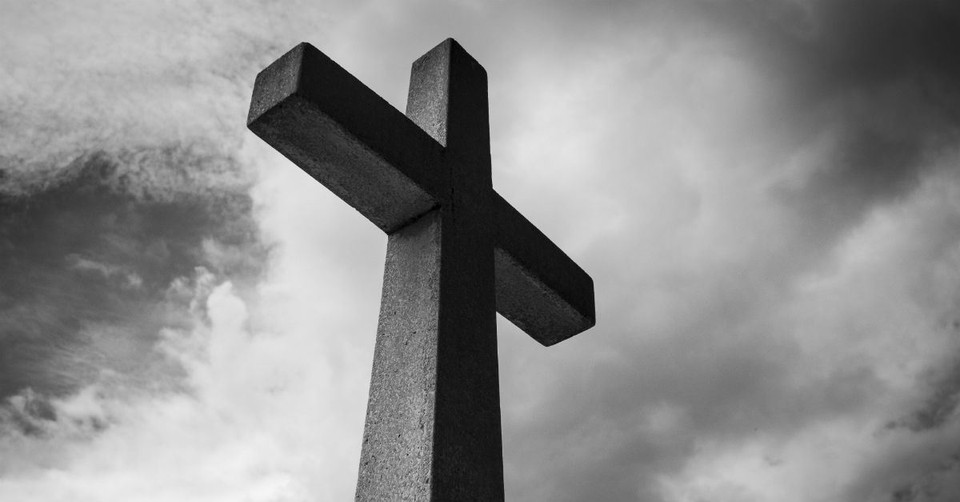What Is the Athanasian Creed?

Who Was Athanasius?
Quicumque vult - this phrase is the title attributed to what is popularly known as the Athanasian Creed. It was often called the Athanasian Creed because for centuries people attributed its authorship to Athanasius, the great champion of Trinitarian orthodoxy during the crisis of the heresy of Arianism that erupted in the fourth century.
That theological crisis focused on the nature of Christ and culminated in the Nicene Creed in 325. Though Athanasius did not write the Nicene Creed, he was its chief champion against the heretics who followed after Arius, who argued that Christ was an exalted creature but that He was less than God.
Athanasius died in 373 AD, and the epithet that appeared on his tombstone is now famous, as it captures the essence of his life and ministry. It read simply, "Athanasius contra mundum," that is, "Athanasius against the world." This great Christian leader suffered several exiles during the embittered Arian controversy because of the steadfast profession of faith he maintained in Trinitarian orthodoxy.
Though the name "Athanasius" was given to the creed over the centuries, modern scholars are convinced that the Athanasian Creed was written after the death of Athanasius. Certainly, Athanasius' theological influence is embedded in the creed, but in all likelihood he was not its author.
Understanding the Athanasian Creed
The content of the Athanasian Creed stresses the affirmation of the Trinity in which all members of the Godhead are considered uncreated and co-eternal and of the same substance. In the affirmation of the Trinity the dual nature of Christ is given central importance. As the Athanasian Creed in one sense reaffirms the doctrines of the Trinity set forth in the fourth century at Nicea, in like manner the strong affirmations of the fifth-century council at Chalcedon in 451 are also recapitulated therein.
Arian Heresy
As the church fought with the Arian heresy in the fourth century, the fifth century brought forth the heresies of monophysitism, which reduced the person of Christ to one nature, mono physis, a single theanthropic (God-man) nature that was neither purely divine or purely human.
Nestorian Heresy
At the same time the church battled with the monophysite heresy, she also fought against the opposite view of Nestorianism, which sought not so much to blur and mix the two natures but to separate them, coming to the conclusion that Jesus had two natures and was therefore two persons, one human and one divine.
Church Response to Both Heresies
Both the Monophysite heresy and the Nestorian heresy were clearly condemned at the Council of Chalcedon in 451, where the church, reaffirming its Trinitarian orthodoxy, stated their belief that Christ, or the second person of the Trinity was vere homo and vere Deus, truly human and truly God.
It further declared that the two natures in their perfect unity coexisted in such a manner as to be without mixture, confusion, separation, or division, wherein each nature retained its own attributes.
Athanasian Creed Affirms the Trinity
The Athanasian Creed reaffirms the distinctions found at Chalcedon, where in the Athanasian statement Christ is called, "perfect God and perfect man." All three members of the Trinity are deemed to be uncreated and therefore co-eternal. Also following earlier affirmations, the Holy Spirit is declared to have proceeded both from the Father "and the Son."
Finally, the Athanasian standards examined the incarnation of Jesus and affirmed that in the mystery of the incarnation the divine nature did not mutate or change into a human nature, but rather the immutable divine nature took upon itself a human nature. That is, in the incarnation there was an assumption by the divine nature of a human nature and not the mutation of the divine nature into a human nature.
The Athanasian Creed is considered one of the four authoritative creeds of the Roman Catholic Church, and again, it states in terse terms what is necessary to believe in order to be saved. Though the Athanasian Creed does not get as much publicity in Protestant churches, the orthodox doctrines of the Trinity and the incarnation are affirmed by virtually every historic Protestant church.
Athanasian Creed Text
"Whoever desires to be saved should above all hold to the catholic faith. Anyone who does not keep it whole and unbroken will doubtless perish eternally. Now this is the catholic faith:
"That we worship one God in trinity and the trinity in unity,neither blending their persons nor dividing their essence. For the person of the Father is a distinct person, the person of the Son is another, and that of the Holy Spirit still another. But the divinity of the Father, Son, and Holy Spirit is one, their glory equal, their majesty coeternal.
"What quality the Father has, the Son has, and the Holy Spirit has. The Father is uncreated, the Son is uncreated, the Holy Spirit is uncreated. The Father is immeasurable, the Son is immeasurable, the Holy Spirit is immeasurable. The Father is eternal, the Son is eternal, the Holy Spirit is eternal. And yet there are not three eternal beings; there is but one eternal being. So too there are not three uncreated or immeasurable beings; there is but one uncreated and immeasurable being.
"Similarly, the Father is almighty, the Son is almighty, the Holy Spirit is almighty. Yet there are not three almighty beings; there is but one almighty being. Thus the Father is God, the Son is God, the Holy Spirit is God. Yet there are not three gods; there is but one God. Thus the Father is Lord, the Son is Lord, the Holy Spirit is Lord. Yet there are not three lords; there is but one Lord.
"Just as Christian truth compels us to confess each person individually as both God and Lord, so catholic religion forbids us to say that there are three gods or lords. The Father was neither made nor created nor begotten from anyone. The Son was neither made nor created; he was begotten from the Father alone. The Holy Spirit was neither made nor created nor begotten; he proceeds from the Father and the Son. Accordingly there is one Father, not three fathers; there is one Son, not three sons; there is one Holy Spirit, not three holy spirits. Nothing in this trinity is before or after, nothing is greater or smaller; in their entirety the three persons are coeternal and coequal with each other. So in everything, as was said earlier, we must worship their trinity in their unity and their unity in their trinity.
"Anyone then who desires to be saved should think thus about the trinity. But it is necessary for eternal salvation that one also believe in the incarnation of our Lord Jesus Christ faithfully.
"Now this is the true faith:
"That we believe and confess that our Lord Jesus Christ, God's Son, is both God and human, equally. He is God from the essence of the Father, begotten before time; and he is human from the essence of his mother, born in time; completely God, completely human, with a rational soul and human flesh; equal to the Father as regards divinity, less than the Father as regards humanity. Although he is God and human, yet Christ is not two, but one. He is one, however, not by his divinity being turned into flesh, but by God's taking humanity to himself. He is one, certainly not by the blending of his essence, but by the unity of his person. For just as one human is both rational soul and flesh, so too the one Christ is both God and human. He suffered for our salvation; he descended to hell; he arose from the dead; he ascended to heaven; he is seated at the Father's right hand; from there he will come to judge the living and the dead. At his coming all people will arise bodily and give an accounting of their own deeds. Those who have done good will enter eternal life, and those who have done evil will enter eternal fire.
"This is the catholic faith:
"one cannot be saved without believing it firmly and faithfully."
Source: ChristianReformedChurch.org
Ligonier Ministries - Tabletalk Magazine
Dr. R.C. Sproul is senior minister of preaching and teaching at Saint Andrew's Chapel and he is founder and chairman of Ligonier Ministries.
©2007 Ligonier Ministries. All Rights Reserved.
Photo Credit: Pexels/Pixabay

Originally published August 15, 2008.







